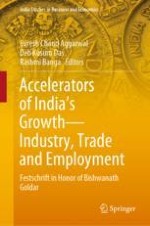Skills development is central to economic performance of the countries in the current milieu when ‘disruptive’ technology is evolving at a fast pace. The new technology—Internet Of Things (IOT), Artificial Intelligence (AI), machine learning, neural networks, digitization of manufacturing, etc.—is changing the face of how we work, and the skills we need to succeed in our jobs. While opening many new windows for investment and increase in productivity and employment, the new technology is simultaneously disturbing the existing technological complementarities and exerting a lot of pressure on the supply of the matching skills. Many jobs which exist today would disappear tomorrow and many new jobs will get created tomorrow which do not exist today. So there is a simultaneous creation and destruction of jobs. The net impact thus depends upon their respective pace. The shortages of ‘new’ skills put several constraints on growth and development by curtailing the prospects for increases in job creation and income. Coupled with mismatch between supply and demand of skills, it constrains productivity improvements and adds to production costs within firms, making it difficult for the domestic firms to compete internationally, adversely impacting growth prospects along the way through trade linkages. Such skill mismatches and skill shake-ups have increased the need for regular skilling, and up-skilling throughout a person’s career, because people with low skills are generally the first ones to lose jobs. But the speed at which jobs are transforming and the workers’ capacity to adapt to such changes are not uniform across industries and countries and are also influenced by access to education, availability and cost of ICT and the opportunities for lifelong learning inside and outside the workplace. Lifelong learning is needed to resolve both the immediate challenge and to add value through skills in the future. The association between skills, productivity and employment has long been discussed and empirically tested. Fields (Education and income: A background study for world development. The World Bank, Washington, DC,
1980) had concluding way back in 1980 that education (skills) have a positive impact on the level of income by paving new opportunities for many who acquire the skills. Skills thus help in employment and income. The survey of adult skills by OECD (OECD skills outlook 2013. First results from the survey of adult skills. Paris, OECD,
2013) also found a positive association between the mean skill level (measured by numeracy score) and the economic performance across countries (measured by PCI in PPP). Global Competitiveness Report (2016) also points out the significance of skills (talent) in an economy to reap the benefits of the tech revolution and achieve higher productivity and employment. But to meet the growing challenge of ‘new’ skills requirement, we have to recognize existing skills, understand skills demand; create right mix of expertise—especially on the job training and learning; and reach out to those firms and people who need it most—the small and medium enterprises(SME); the low skilled workers; and older workers. Since better skills are likely to lead to quick employment and higher income, for them acquiring and updating skills would be the best insurance against job losses. However, higher economic growth and income also, in turn, help a country with the resources to improve the opportunities for acquiring and developing skill base through the expansion of education and training, leading to a virtuous chain of growth in income, skills, productivity, and employment. There are still quite a few countries, including India which even though have achieved high economic growth, but struggle with low human capital scores (which is a composite score of different parameters and includes enrollment and quality of education; and skills distribution among others (World Economic Forum in The human capital report,
2016)); indicating their neglect in expanding education and imparting necessary skills. The paper aims to first map the industries, based on capital intensity and/or ICT produced/used, in which technology has changed rapidly resulting in change in skills requirements. It will then explore the linkage between skills distribution, (labour) productivity and growth in employment both at the disaggregated industry level as well as at national level for few selected countries like
BRIC countries, Indonesia, Mexico, South Korea, etc. for the period 1995–2009; all of which have faced the similar challenges. The exercise would also be carried out separately for formal (organized) and informal (unorganized) sectors of the Indian economy, as it is expected that formal sector firms; especially in the modern sector of the economy are likely to pay higher average wages reflecting higher productivity, which in turn, is partially determined by their skills. These firms, which are also relatively large in size, are also likely to spend more not only in R &D but also on the job training, resulting in better skills proficiency which in turn is likely to lead to higher productivity and growth in employment. The last section would highlight the learning from the experience and focus on the policy challenges the countries would have to face in view of the changing technology landscape.
